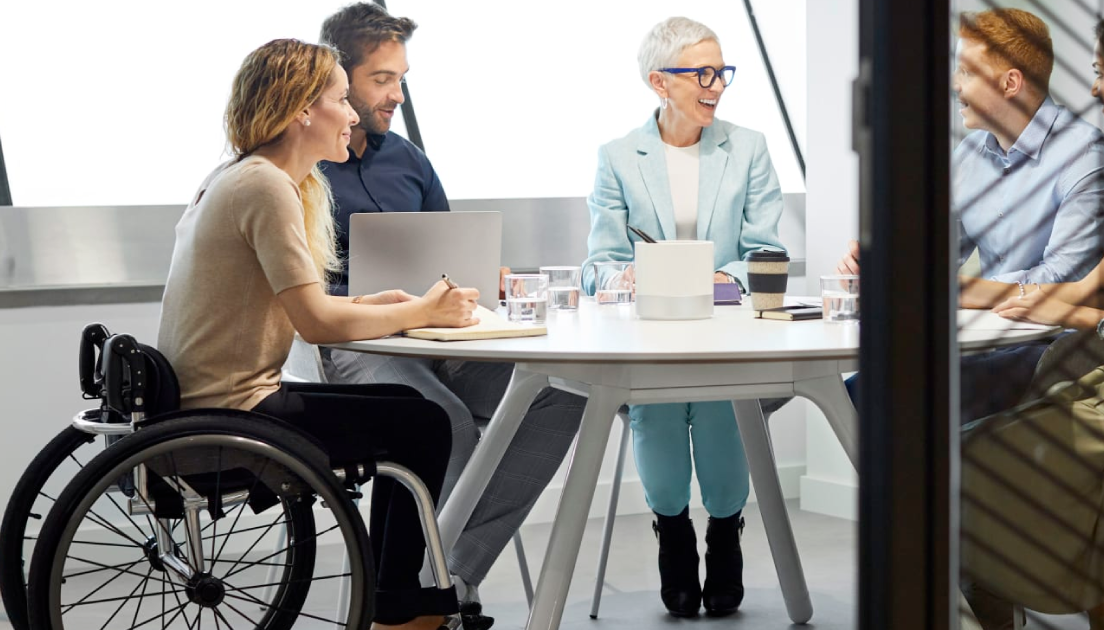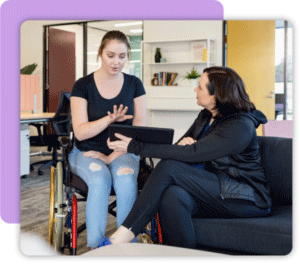Nonprofit Technology & Fundraising Blog
Subscribe to our mailing list

March 22, 2022 |
Despite a steady incline in Diversity, Equity, & Inclusion work in the nonprofit sector, experts say most still aren’t doing enough to ensure events are inclusive and accessible to everyone. To be inclusive of all your donors, your event goals should directly align with your goals as an organization, including DEI.
Let’s get into the core aspects of nonprofit email marketing, and how to reach expert level in each.
Nonprofits should “assume disabled people are in the room, even if they aren’t evident, and that they are stakeholders in your event,” recommends Rooted in Rights, an organization that uses accessible digital media to advance the dignity, equality, and self-determination of people with disabilities.
To hold nonprofits accountable, Rooted in Rights recommends:

RespectAbility Founder Jennifer Mizrahi recommends that smaller nonprofits who are just starting out with DEI work can use built-in captions offered by Zoom and other virtual event platforms. This benefits those who identify as deaf or hard of hearing, nonnative English speakers, and those with cognitive disabilities.
Digital elements include open captioning, audio descriptions of video content, recordings of live events, American Sign Language interpretation, Spanish audio translation, an accessible web portal for the event, and compatibility with assistive technologies like screen readers. Your organization can look to Web Content Accessibility Guidelines for help.
Asking about accommodations sends a clear signal that people with disabilities and health challenges are welcome at your event – virtual or not – and that inclusion is a priority. You can ask donors on your online registration form if they will need accommodations. And after the event, you can send out a survey to see how well you did with accommodating their needs.
Draw inspiration from accommodations made during the pandemic
People with disabilities face a higher risk of getting COVID-19 and experiencing serious symptoms. To host a dignified event for children during a pandemic, DonorPerfect client Children’s Scholarship Fund of Omaha focused on making the families of scholarship nominees as comfortable as possible. They included a note with the invitation stating the event safety protocol, and that, if guests were uncomfortable with any aspect of it, organizers would accommodate them however possible. The safety protocol was shared with board members before the event, as well, to keep everyone aligned.
CSFO sent each person who registered for the luncheon a pre-event email. They let them know they were looking forward to their attendance and shared their safety protocol. When people contacted the organization with safety concerns, they could then point back to that memo, send an additional copy, or work with them directly to meet their needs.
By creating a dynamic list of your event registrants, you can send a mass email to outline your accessibility protocol and ask for feedback. Integrated fundraising solutions like DonorPerfect and Constant Contact help you manage an inclusive event from start to finish – invites, invoices, reports, and receipts.
Many nonprofit leaders want to improve accessibility at their events but don’t know how, explains Bridget Hayman, Communications Director at Access Living. “Usually what I tell them is to factor accessibility into your planning from the very start. That means thinking about how to ensure that as many people as possible can join, not necessarily considering only those with disabilities,” she says.
Time is a bigger factor than budget
For virtual events, Hayman recommends taking advantage of features your online event tools already offer, such as video captions, explaining that sometimes it’s simply a matter of turning these features on, with little-to-no additional cost. For in-person events, choose a location that enables everyone to attend. This doesn’t necessarily require a bigger budget, as many public spaces like libraries and hotels are already accessible.
 It’s important to build relationships with people with disabilities in your community who can inform your efforts. “Include people with visible disabilities in your marketing materials,” Mizrahi says. “Don’t portray those individuals only as recipients of your services, but as contributing members of your community, as leaders, and as caregivers.”
It’s important to build relationships with people with disabilities in your community who can inform your efforts. “Include people with visible disabilities in your marketing materials,” Mizrahi says. “Don’t portray those individuals only as recipients of your services, but as contributing members of your community, as leaders, and as caregivers.”
Rooted in Rights recommendations:
At the end of the day, the best way to make someone feel included is to actually include them in your process from start to finish. People with disabilities can inform your event planning, speak at your event, or suggest discussion topics. Be sure to compensate for their time and expertise as an ongoing investment.
Follow us on social!